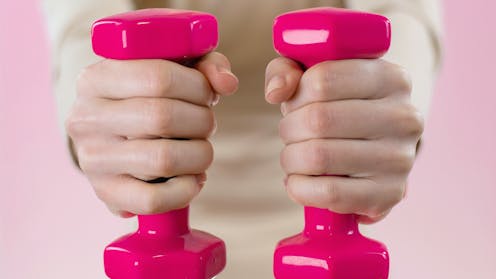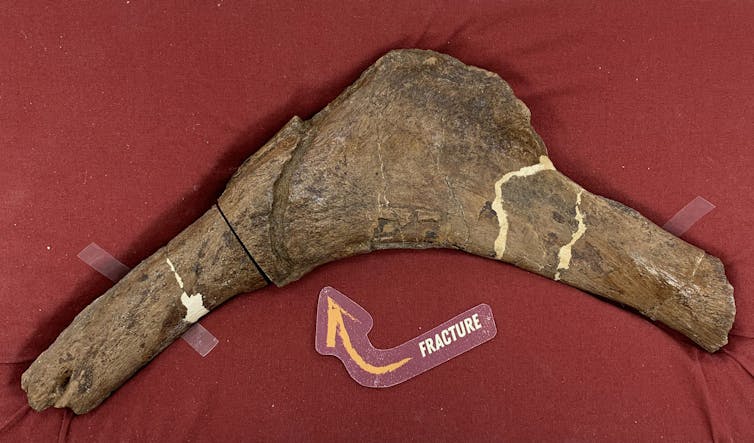Source: The Conversation – (in Spanish) – By Liliya Kazantseva, Responsable de Producción de Medicamentos de Terapias Avanzadas, Junta de Andalucía

Durante varios años, Victoria intentó lidiar con su exceso de grasa corporal sin mucho éxito. Después de probar distintas dietas y hacer ejercicio físico, su médico le propuso someterse a una liposucción.
En un congreso al que asistió, el médico de Victoria descubrió que la grasa podía usarse para producir un tipo de medicamento muy peculiar, y preguntó a su paciente si estaba dispuesta a donarlo.
Medicamento biológico
Como le ocurrió a Victoria, tal vez le asalten varias preguntas: ¿cómo es posible producir un medicamento a partir de la grasa? ¿Sería como una pastilla hecha de manteca? Vayamos paso por paso.
Estamos acostumbrados a tomar paracetamol o ibuprofeno cuando queremos aliviar un malestar general. Estas pastillas contienen ciertas sustancias químicas que producen efectos beneficiosos, como aliviar el dolor de cabeza.
Sin embargo, existen otros fármacos, conocidos como “medicamentos de terapias avanzadas”, cuya actividad terapéutica viene determinada por sustancias de origen biológico, como las células de nuestro cuerpo. Debido a su naturaleza “viva”, estos fármacos resultan ser más complejos que una pastilla convencional.
Pero ¿qué contiene la grasa?
La grasa de nuestro organismo es más que un simple bloque de manteca. Su interior alberga unas células muy valiosas, conocidas como células madre mesenquimales, que también pueden obtenerse a partir de la médula ósea, la placenta o incluso de la pulpa dental, lo que las hace bastante ubicuas. Estas tienen la capacidad de convertirse en otros tipos celulares, como neuronas o células del hueso, y contribuir a la regeneración de tejidos tras una lesión.

Mehmet Turgut Kirkgoz/Pexels
Normalmente, en terapias avanzadas se prefiere trabajar con células madre de la grasa debido a su fácil obtención.
Pero no todo es tan sencillo cuando los expertos manejan sustancias de origen biológico. Así, se ha visto que por cada gramo de lipoaspirado es posible obtener cerca de un millón de células madre. Esto puede parecer mucho, pero no es suficiente si se quieren emplear como medicamento.
Para detectar mejoras en el cuerpo hace falta administrar, habitualmente por la vía intravenosa, varios millones de células, que pueden sumar, dependiendo del caso, hasta 200 millones. Para alcanzar esa cantidad es necesario multiplicar las células en una instalación específica.
Un huerto celular
Igual que se cultivan los tomates en un invernadero, los científicos trabajan dentro de un recinto cerrado y controlado. Conocido como “sala blanca”, está diseñado para evitar que contaminantes como bacterias, hongos o partículas inertes entren al interior, garantizando así la esterilidad del medicamento.

Pavel Danilyuk/Pexels
Es aquí donde llega la grasa donada, que será sometida a la acción de unas “tijeras moleculares invisibles”. Estas permiten extraer y separar las células madre, que se multiplican en frascos especiales donde es recreado su ambiente natural. Una vez alcanzada la cantidad necesaria, las células se acondicionan en una solución inocua que mantiene sus propiedades y permite administrarlas al paciente.
¿Por qué las células madre?
¿Y qué tienen de especial estos medicamentos “vivos”? La respuesta está en las características únicas de las células madre. Una de las más relevantes es que no suelen producir problemas de compatibilidad entre individuos, a diferencia de las trasfusiones sanguíneas, donde se deben comprobar grupos y compatibilidad para evitar las reacciones adversas.
Además, las células madre son capaces de modular la respuesta del sistema inmune, evitando que reaccione de forma exagerada y cause daño al propio cuerpo. Estas propiedades las hacen especialmente útiles en enfermedades autoinmunes o en casos de rechazo tras un trasplante.
Y también tienen la capacidad de dirigirse a zonas del cuerpo dañadas y contribuir a la regeneración del tejido afectado en la piel, el hueso o el nervio.
Héroes invisibles
Todos los fármacos que usamos en nuestro día a día han pasado por un largo camino de desarrollo en el que se ha tenido que demostrar tanto su seguridad como su efecto deseado. Los medicamentos de terapias avanzadas representan un grupo novedoso de fármacos, por lo que actualmente los tratamientos basados en células madre se hallan mayoritariamente en fase de ensayo clínico. Por ejemplo, en septiembre de 2023 se registraron 1 748 ensayos clínicos con este tipo de terapia.
Aun así, cabe destacar que las terapias avanzadas jugaron un papel importante durante la pandemia de covid-19, cuando las células madre se emplearon para aliviar la inflamación pulmonar en casos graves de neumonía.
Tras décadas de avances, no es descabellado pensar que en los próximos años se aprobarán nuevos medicamentos basados en el uso de células madre. Esto permitirá avanzar hacia una medicina personalizada, adaptada a las necesidades específicas de cada paciente.
Gracias a esta experiencia, Victoria descubrió que al someterse a una liposucción y donar su grasa no solo estaba tomando una decisión para su propio bienestar, sino que también estaba ofreciendo una oportunidad de tratamiento a muchas otras personas. Una alternativa terapéutica innovadora, segura y que, en algunos casos, representa la única esperanza disponible. ¿Quién diría que algo que solemos querer eliminar puede, en realidad, salvar vidas?
![]()
Las personas firmantes no son asalariadas, ni consultoras, ni poseen acciones, ni reciben financiación de ninguna compañía u organización que pueda obtener beneficio de este artículo, y han declarado carecer de vínculos relevantes más allá del cargo académico citado anteriormente.
– ref. La segunda vida de la grasa: una rica fuente de células madre para crear terapias avanzadas – https://theconversation.com/la-segunda-vida-de-la-grasa-una-rica-fuente-de-celulas-madre-para-crear-terapias-avanzadas-259723










